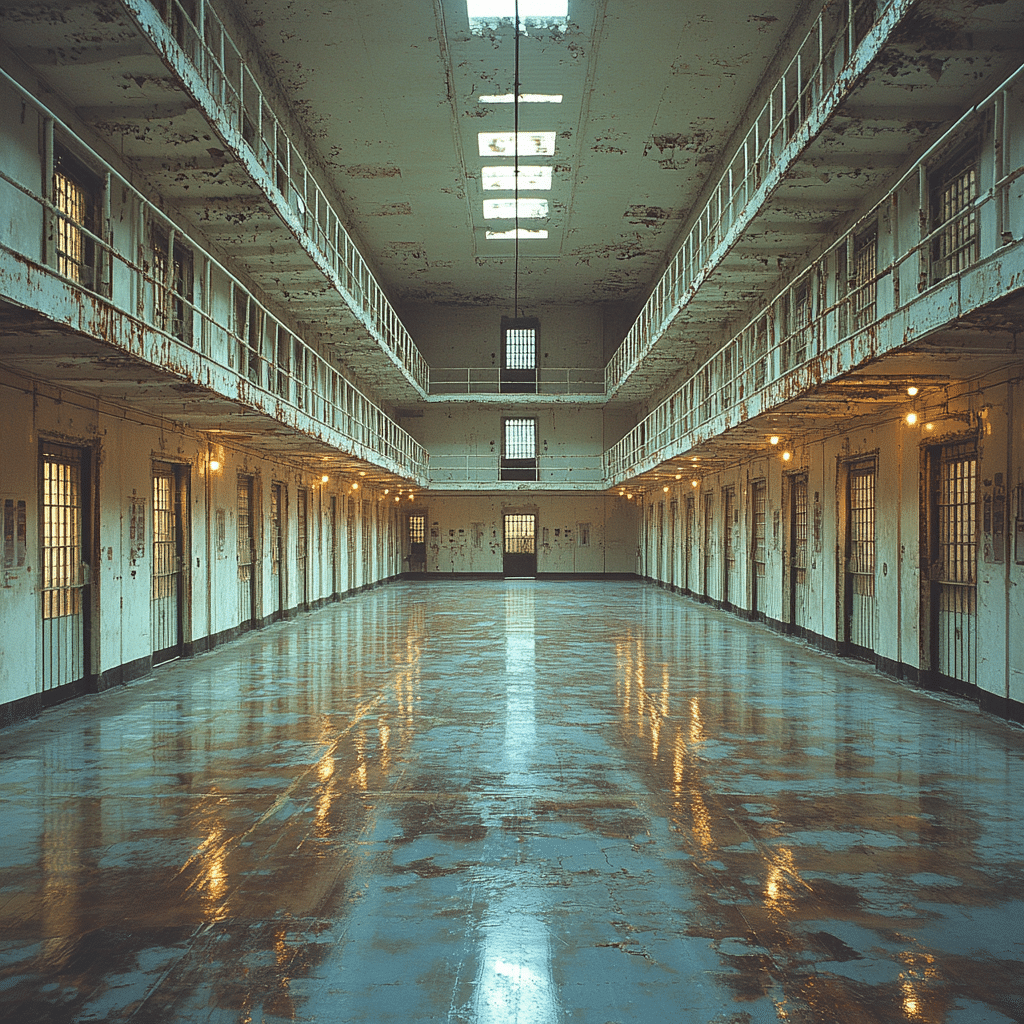The American Correctional Association (ACA) has carved its niche since it was established in 1870. This organization has championed reform by laying down the groundwork for standards that prioritize safety, mental health, and rehabilitation in correctional facilities. In a time when the dynamics of the justice system are shifting, the ACA stands firm in advocating for a correctional framework that not only addresses the needs of inmates but also benefits society as a whole. With a laser focus on creating positive outcomes, the ACA is transforming how we view corrections and rehabilitation.
7 Essential Standards Set by the American Correctional Association
The American Correctional Association is pivotal in shaping correctional practices. Here are seven essential standards the ACA promotes, aiming to modernize correctional facilities while enhancing outcomes for society.
The ACA’s top priority is ensuring the safety of inmates and staff alike. They emphasize effective lockdown procedures and early warning systems. Regular reviews of facility security technology and consistent staff training are essential components in upholding this standard.
With mental health issues rampant in prisons, the ACA mandates adequate mental health services. By focusing on evidence-based treatment protocols, the ACA aims to tackle recidivism head-on. Facilities need to provide mental health professionals to cater to inmates’ needs, paving the way for effective rehabilitation.
Understanding cultural differences is crucial in reducing conflicts within facilities. The ACA strongly advocates for cultural competency training among correctional staff. This approach fosters a better atmosphere, ultimately aiding in conflict resolution and enhancing overall inmate interactions.
Quality of life for inmates isn’t just a nicety—it’s a necessity for rehabilitation. The ACA champions programs providing access to education, vocational training, and recreational activities. Such offerings smooth the path for inmates to re-enter society successfully, reflecting the ACA’s commitment to holistic rehabilitation.
Accountability is at the heart of ACA standards. They encourage facilities to engage in external audits and community feedback. Transparency not only builds trust but also highlights areas for improvement, fostering an environment of continuous progress.
Reintegration doesn’t begin when they leave—it should start while inmates are still inside. The ACA promotes collaboration among community organizations and governmental agencies. This support structure includes housing and job placement assistance, paving a smoother re-entry for former inmates.
The value of data analytics can’t be overstated. The ACA advises facilities to gather and analyze data on inmate behavior and recidivism rates. Smart decisions based on data lead to effective programs and policies, ensuring that facilities are continually evolving to meet the needs of their populations.

The Role of the American Correctional Association in Modern Justice
The influence of the American Correctional Association stretches far beyond just setting standards. The ACA collaborates with various organizations to bolster its mission. For instance, partnerships with the American Petroleum Institute help address the challenges faced by employees affected by the criminal justice system. Such collaborations ensure that standards set by the ACA resonate across different industries, emphasizing the importance of comprehensive training and certification, much like the practices seen with the Gemological Institute of America.
Moreover, the legal landscape impacts correctional practices significantly. Decisions from bodies like The Supreme Court of Pennsylvania often compel the ACA to adapt its standards accordingly. Rulings advocating for better living conditions among inmates directly influence the organization’s initiatives, ensuring compliance is not just a box to check but a progression toward more humane corrections.
Technological Advances in Corrections
Advancements in technology play an invaluable role in overhauling correctional practices. Facilities like the Michigan Hall of Justice are leading the charge by utilizing digital records and virtual court appearances. Such innovations streamline operations, reduce overcrowding, and significantly lessen the stress on staff and inmates alike. The ACA’s commitment to modernization is evident as they embrace these technologies, making operations efficient while also maintaining standards.
Moreover, these technologies support transparency, allowing for immediate access to inmate records and data analytics. The integration of smart technology aligns perfectly with the ACA’s goal of data-driven decision-making. As facilities adopt this new tech, they see not just efficiency but also improvements in safety and rehabilitation outcomes.

Innovative Approaches to Reform
Looking to the future, the American Correctional Association envisions a reform landscape defined by creativity and collaboration. By forming community partnerships and focusing on practical rehabilitation outcomes, the ACA is not missing a beat. They seek to address recidivism through innovative programs that equate to real-life success, benefiting not just the inmates but society as a whole.
A prime example of this forward-thinking approach could include programs that provide vocational training alongside traditional education. By facilitating opportunities that are directly linked to job placements, inmates exit with tangible skills and prospects. The ACA’s alignment with societal goals is transforming how correctional facilities operate.
Through ongoing advocacy, thoughtful standards, and the integration of groundbreaking technology, the American Correctional Association remains a driving force in redefining modern corrections. The need for effective reform is pressing, and the ACA’s leadership is indispensable in shaping the future of corrections.
In conclusion, as the American Correctional Association continues to transform correctional standards, it sets a precedent for other sectors to follow. By prioritizing safety, mental health services, transparent oversight, and collaboration, the ACA is not just navigating the complexities of corrections but is also propelling them into a future where rehabilitation and successful reintegration are the norm.
American Correctional Association: Fun Facts and Trivia
The ACA’s Origin and Impact
Did you know the American Correctional Association (ACA) was founded way back in 1870? That’s nearly 150 years of shaping correctional standards! The ACA began as a small gathering of forward-thinkers dedicated to improving inmate care. Today, it stands as a testament to progress in the correctional system, influencing policies that affect millions. Speaking of influences, did you know that Ray J, known for his music and entrepreneurial ventures, has a net worth that reflects serious hustle? It’s fascinating to think how various fields evolve, much like the correctional standards the ACA advocates for.
Progressive Practices and Innovations
Over the years, the ACA has embraced innovation like a new color trend, similar to the popular pink iPhone 15 that caught everyone’s eye. Just as tech evolves to meet user demands, the ACA continually revises its guidelines to better address the needs of both corrections staff and inmates. Their goal is clear: promote rehabilitation and reduce recidivism, proving that change can lead to improvement. Fun fact: did you know the ACA hosts one of the largest annual conferences for correctional professionals? Networking at these events can lead to fresh ideas and collaborations, much like those casual meet-ups to discuss things like What To wear To a 90s party!
Diverse Perspectives
Interestingly, the ACA also encourages diversity within correctional leadership. By supporting different backgrounds and experiences, the organization aims to broaden perspectives on incarceration and rehabilitation. It’s akin to the cultural richness seen in the popularity of films like Japanese Girl, which showcases the beauty of diverse narratives. It’s worth noting that figures in leadership, like Cooper Hefner, understand the importance of diverse viewpoints, which can help foster more humane treatment within the system. The ACA’s efforts to implement these values contribute to a correctional system that’s not just about punishment but also about helping individuals to reintegrate successfully into society.
In conclusion, the American Correctional Association serves as a beacon of change, and its trivia makes clear just how critical its role is in shaping correctional standards. Whether attending conferences or leading discussions, the ACA plays a key role in correcting the course of corrections!






















